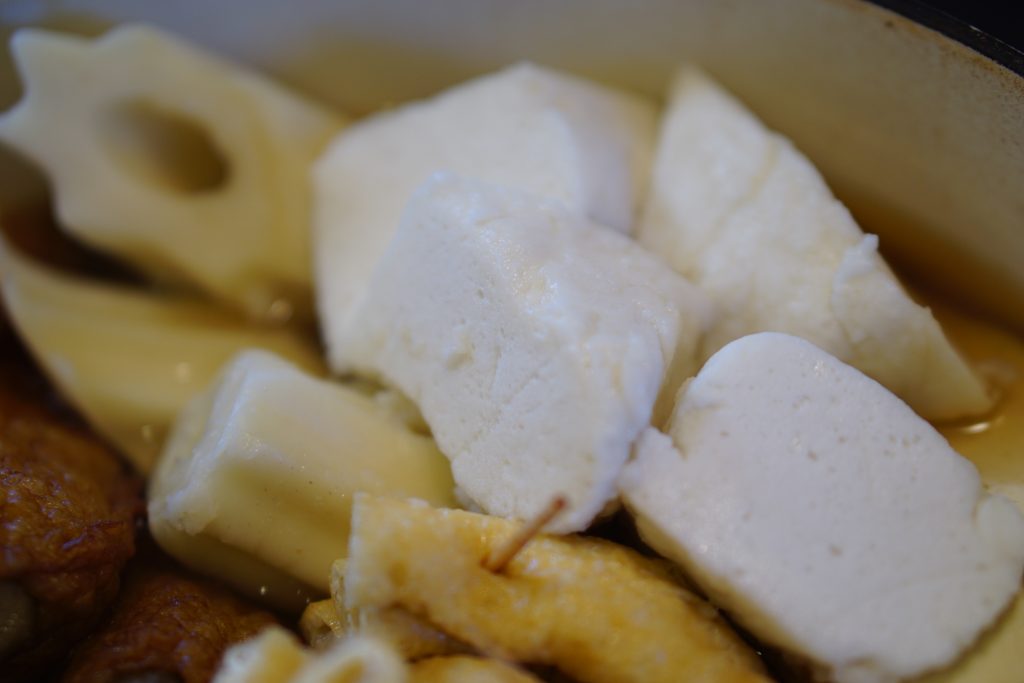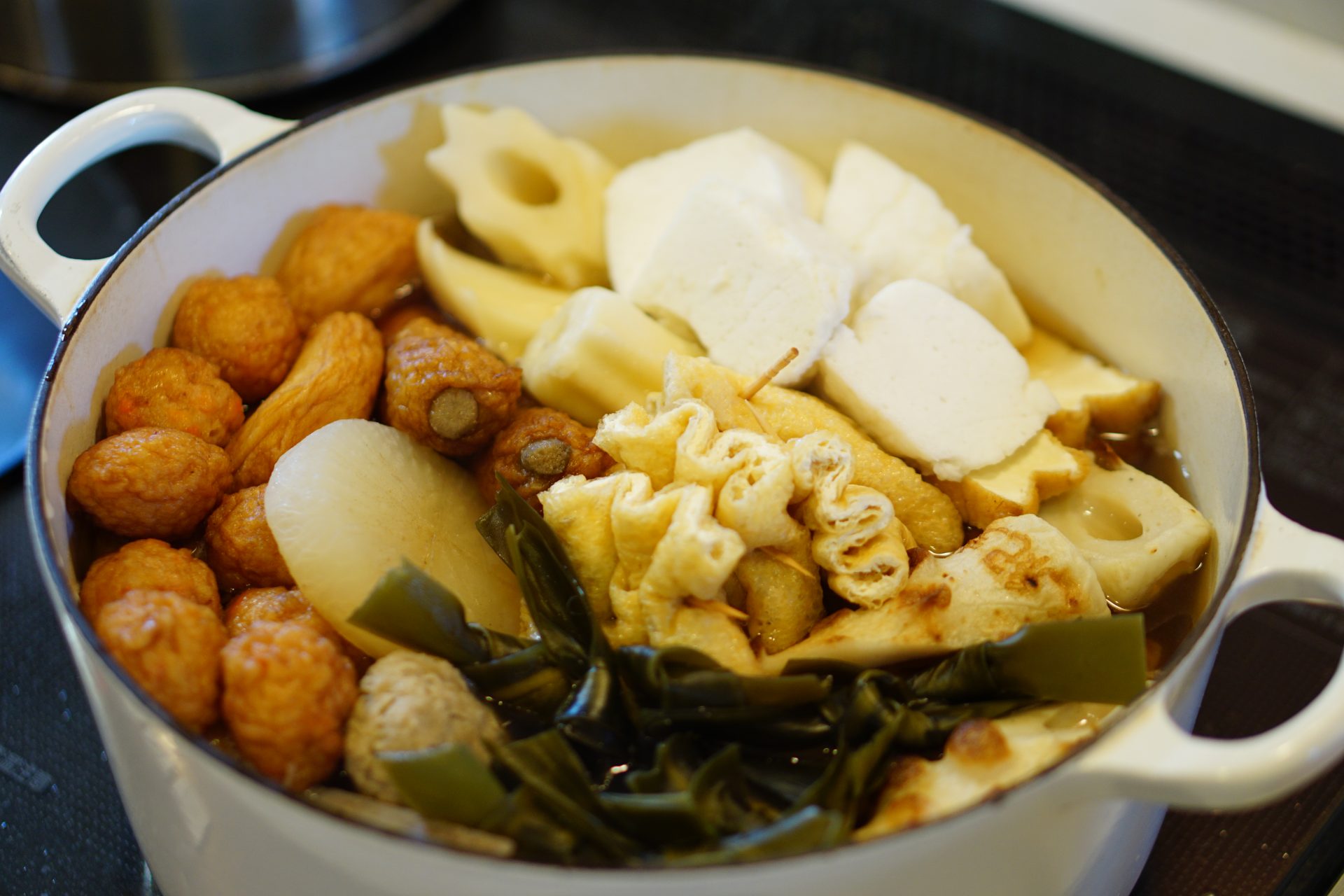This winter hot pot is said to have gotten its name from dengaku, a Japanese dish from the Muromachi period (1336-1573) consisting of skewered pieces of konnyaku, coated with miso paste and grilled. Another possible origin is kanto-daki, a stew made from soy sauce and a kombu, seaweed, whale meat and beef tendon dashi broth.
Whatever its origins were, the oden of today has most probably changed a little, and its ingredients and broth flavour vary greatly by region. In Kanto the broth includes strong soy sauce, in Kansai a milder soy sauce, and the Nagoya version uses miso paste. Some of the most common ingredients are: eggs, daikon, konnyaku, kombu, potato, tofu-based ingredients (e.g. aburaage, or thin fried tofu; atsuage, or thick fried tofu; kinchaku, an aburaage pouch filled with mochi or other ingredients) and deep-fried surimi (fish paste)-based ingredients (e.g. the hollow tube-shaped chikuwa; gobomaki and ikamaki, in which burdock root or squid are wrapped with surimi; and satsumaage, a mix of surimi and other ingredients shaped into patties).
In the recipe below we included two ingredients that are almost only used in Kanto: hanpen, a light and fluffy surimi-based product, and chikuwabu, a tube like chikuwa, but made of flour instead of fish paste.
One of the most enjoyable parts about eating oden (other than the fact that it warms you to your bones!) is the variety of goodies you’ll find in your bowl. However, it can be time-consuming to make a large number of different ingredients from scratch, which is why many grocery stores sell these ready-made – you can even find oden kits including a number of fillings as well as the broth, if you happen to live in Japan.
If you can’t find a kit, rejoice in the fact that you have a great opportunity to make the broth from scratch and fill the dish with the ingredients you have on hand, and a Japanese recipe to show you how!
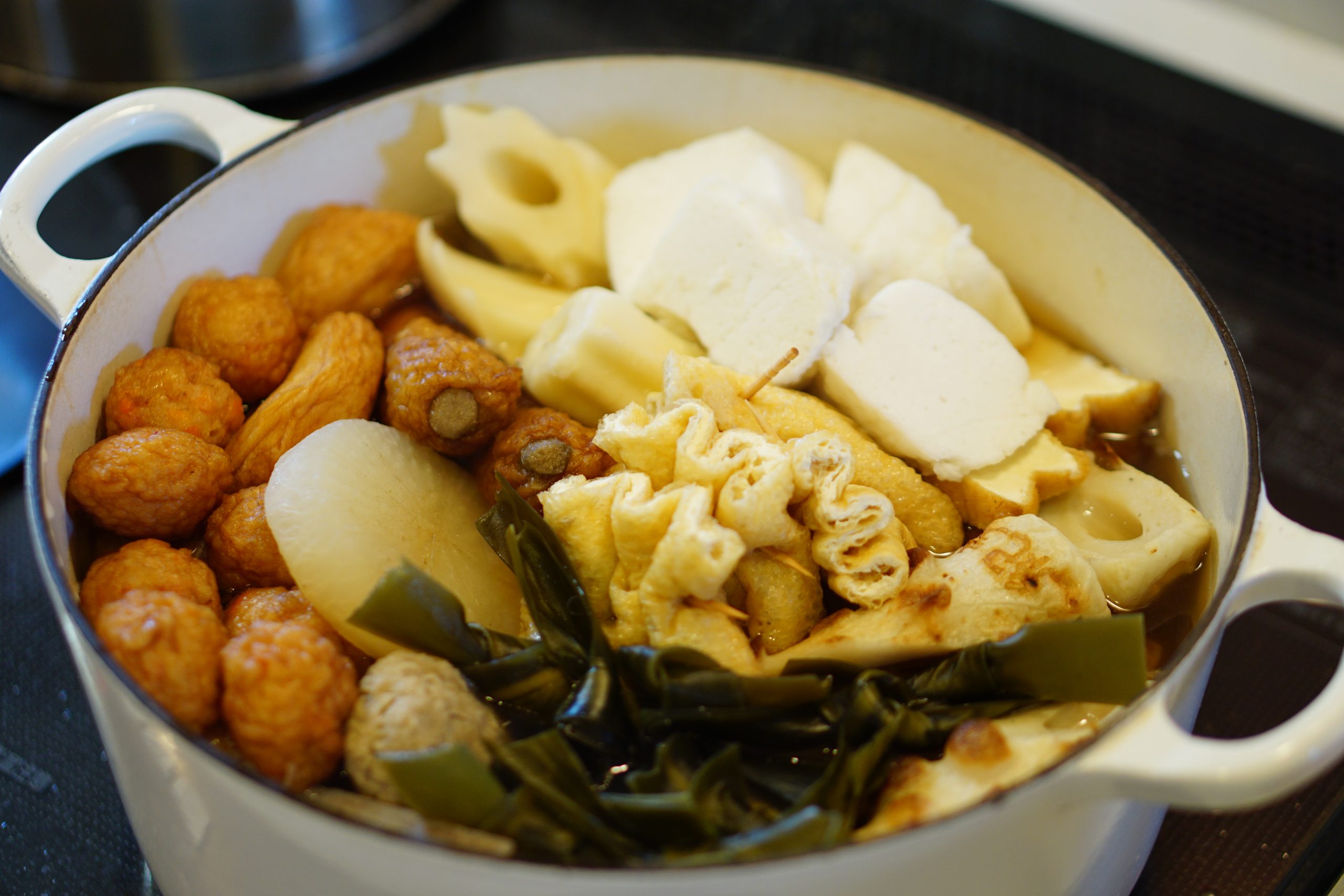
Oden
Ingredients
- ½ daikon
- 1 block hanpen about 120 grams
- 1 block konnyaku about 200 grams
- 4 eggs
- 1 block atsuage about 250 grams
- 1 chikuwa about 100 grams
- 1 chikuwabu 130 grams
- 4 kinchaku
- 8 satsumaage
- 4 tsumire
- 4 gobo maki
- 4 uzura maki
- 25cm kombu long piece
- 20 g katsuobushi
- 900 mL water
- 100 mL sake (A)
- 5 tbsp mirin (A)
- 4 tbsp soy sauce (A)
- 1 tsp salt (A)
- karashi paste (Japanese mustard) to taste
Instructions
- Make the dashi using a 25cm long piece of kombu and about 20 grams of katsuobushi. Take the kombu used to make the dashi and cut into long 1.5cm wide strips. Fold each strip in half and tie in a knot.Peel the daikon and cut into 2cm thick slices. Score one side of each slice with an X (this allows it to absorb more broth), then put in a pot of water on high heat. Bring to the boil and allow to boil for 5 minutes, then remove from the pot.Use the same water and boil the konnyaku for 2 minutes, then drain. Cut in half, then cut each piece in half diagonally (so you end up with 4 triangular pieces). Score both sides of each piece with a crosshatch pattern.Boil the eggs, then peel. (Here’s a great – though a little lengthy – breakdown on boiling the perfect egg.)Pour boiling water (from a kettle) over all the fried ingredients (atsuage, satsumaage, gobo maki and uzura maki) to remove the excess oil.Cut the hanpen and atsuage in the same way as you cut the konnyaku.Cut the chikuwa and chikuwabu diagonally into 3-4 pieces.
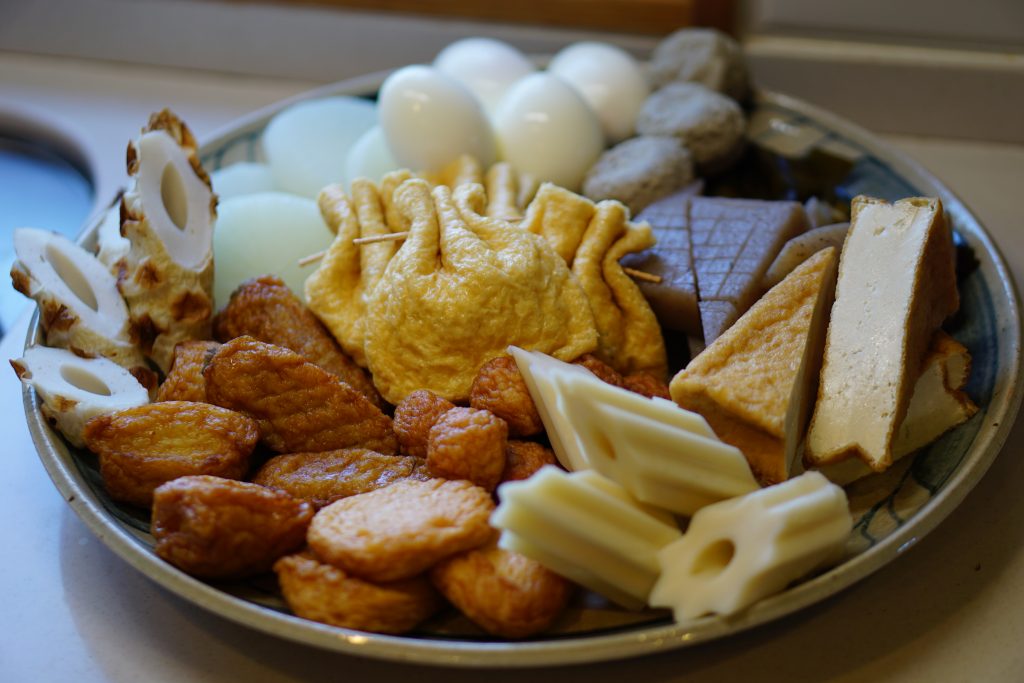
- Put the dashi and (A) into a large pot over high heat. Add the boiled eggs, daikon and konnyaku, and bring to a boil. Reduce the heat to low and simmer for 30 minutes.
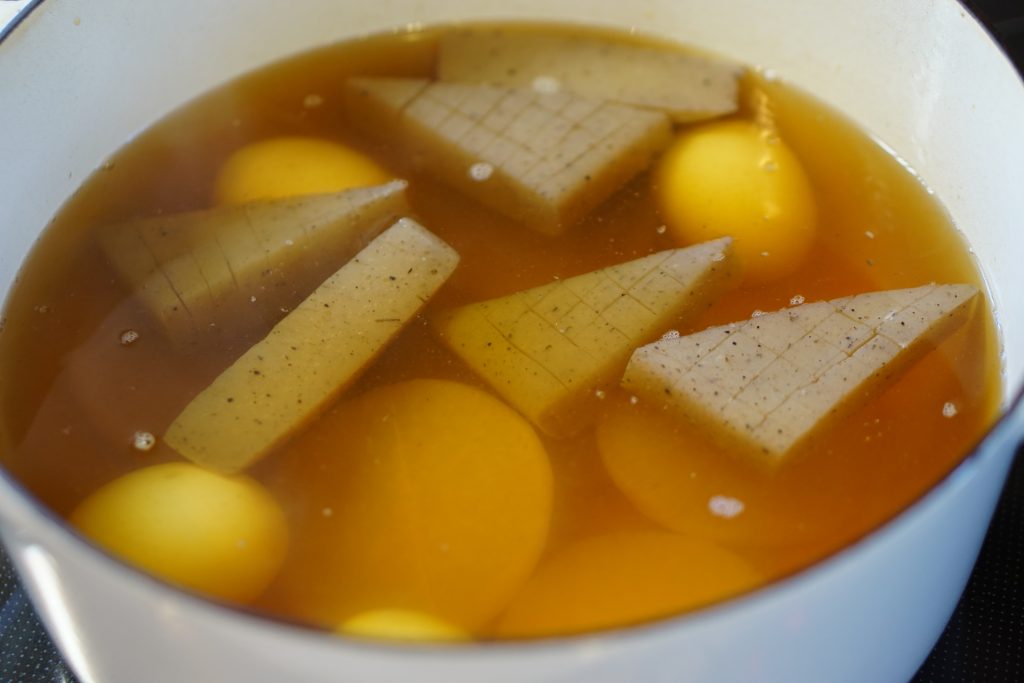
- Add the rest of the ingredients (except the hanpen), making sure that they are all submerged (especially the kinchaku – the rice cake inside it needs to be submerged in order to soften). Return to a boil and reduce the heat to low again, covering, and simmer for another 20 minutes at least.
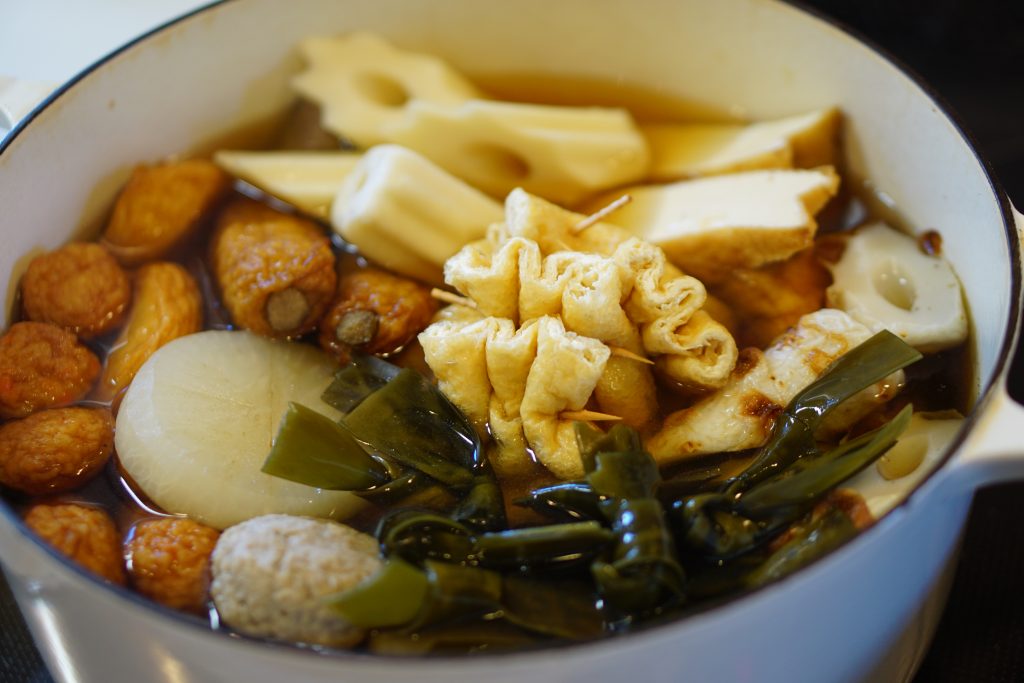
- Add the hanpen and cook for another 2 minutes, covered. Then turn off the heat, and bring the big pot to the table to share with friends and family! Serve with karashi paste to taste.
